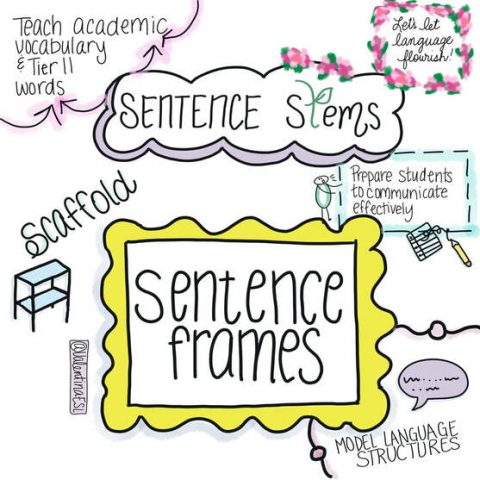United National International Mother Language Day
February 21st is the UN’s International Mother Language Day. Consider how you can discuss, share and promote mother/home languages with your students. According to the UN, approximately 43% of the world’s 6000 languages
are endangered. The UN also notes that “languages are the most powerful instruments of preserving and developing our tangible and intangible heritage.” We hope this leads to interesting and meaningful conversations with your
students.
https://www.un.org/en/observances/mother-language-day
Every Teacher is a Language Teacher
Sentence Frames
Having sentence frames for both oral and written answers is one way to provide content to all levels of language learners. They provide explicit modelling of academic language and can be leveled to provide access for all.
First, use sentences that have a language function such as sequencing, comparing and contrasting, or describing. Then write the sentences for various abilities on the board with the target vocabulary.
Example of contrasting sentence frames
Beginning: “Plants are living. Rocks are non-living.” ______________ are living. _____________ are non-living. (simple sentences)
Expanding: “Plants are living, yet rock are non-living” _______________ are living, (but, yet, although) _____________ are non-living.” (compound sentence)
Bridging: “The main difference between plants and rocks is that plants are living organisms while rocks and nonliving substances.” The main difference between _____________________ and _______________ is that ____________________________ while _____________________________________________________.
Image from: Valentina Gonzalez https://elementaryenglishlanguagelearners.weebly.com/blog/sentence-stems-or-sentence-frames

Leave a Reply